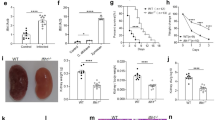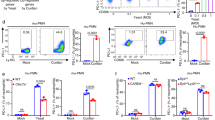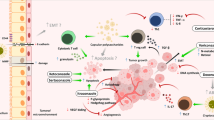Abstract
Since molecular genotyping has been established for the Candida species, studies have found that a single Candida strain (endemic strain) can persist over a long period of time and results in the spread of nosocomial invasive candidiasis without general characteristics of horizontal transmissions. Our previous study also found the existence of endemic strains in a cancer center in Tianjin, China. In the current study, we performed further investigation on endemic and non-endemic Candida albicans strains, with the aim of explaining the higher morbidity of endemic strains. In an in vivo experiment, mice infected with endemic strains showed significantly shorter survival time and higher kidney fungal burdens compared to mice infected with non-endemic strains. In an in vitro experiment, the killing percentage of neutrophils to endemic strains was significantly lower than that to non-endemic strains, which is positively linked to the ratio of LC3B-II/I in neutrophils. An immunofluorescence assay showed more β-1,3-glucan exposure on the cell walls of non-endemic strains compared to endemic strains. After blocking the β-glucan receptor (CR3) or inhibiting downstream kinase (SYK) in neutrophils, the killing percent to C. albicans (regardless of endemic and non-endemic strains) and the ratio of LC3B-II/I of neutrophils were significantly decreased. These data suggested that the killing capability of neutrophils to C. albicans was monitored by β-1,3-glucan via CR3/SYK pathway-dependent LC3B-II accumulation and provided an explanation for the variable killing capability of neutrophils to different strains of C. albicans, which would be beneficial in improving infection control and therapeutic strategies for invasive candidiasis.
Similar content being viewed by others
References
Akoumianaki, T., Kyrmizi, I., Valsecchi, I., Gresnigt, M.S., Samonis, G., Drakos, E., Boumpas, D., Muszkieta, L., Prevost, M.C., Kontoyiannis, D.P., et al. 2016. Aspergillus cell wall melanin blocks LC3-associated phagocytosis to promote pathogenicity. Cell Host Microbe 19, 79–90.
Asmundsdottir, L.R., Erlendsdottir, H., Haraldsson, G., Guo, H., Xu, J., and Gottfredsson, M. 2008. Molecular epidemiology of candidemia: evidence of clusters of smoldering nosocomial infections. Clin. Infect. Dis. 47, e17–e24.
Bandyopadhyay, U. and Overholtzer, M. 2016. LAP: the protector against autoimmunity. Cell Res. 26, 865–866.
Bonfim-Mendonca Pde, S., Ratti, B.A., Godoy Jda, S., Negri, M., Lima, N.C., Fiorini, A., Hatanaka, E., Consolaro, M.E., de Oliveira Silva, S., and Svidzinski, T.I. 2014. β-glucan induces reactive oxygen species production in human neutrophils to improve the killing of Candida albicans and Candida glabrata isolates from vulvovaginal candidiasis. PLoS One 9, e107805.
Cao, X. 2016. Self-regulation and cross-regulation of pattern-recognition receptor signalling in health and disease. Nat. Rev. Immunol. 16, 35–50.
de Luca, A., Smeekens, S.P., Casagrande, A., Iannitti, R., Conway, K.L., Gresnigt, M.S., Begun, J., Plantinga, T.S., Joosten, L.A., van der Meer, J.W., et al. 2014. IL-1 receptor blockade restores autophagy and reduces inflammation in chronic granulomatous disease in mice and in humans. Proc. Natl. Acad. Sci. USA 111, 3526–3531.
Dice, J.F. 2010. Artophagy: The art of autophagy-macroautophagy. Interview by Daniel J. Klionsky. Autophagy 6, 320–321.
Duggan, S., Essig, F., Hunniger, K., Mokhtari, Z., Bauer, L., Lehnert, T., Brandes, S., Hader, A., Jacobsen, I.D., Martin, R., et al. 2015. Neutrophil activation by Candida glabrata but not Candida albicans promotes fungal uptake by monocytes. Cell. Microbiol. 17, 1259–1276.
Erwig, L.P. and Gow, N.A. 2016. Interactions of fungal pathogens with phagocytes. Nat. Rev. Microbiol. 14, 163–176.
Ferwerda, B., Ferwerda, G., Plantinga, T.S., Willment, J.A., van Spriel, A.B., Venselaar, H., Elbers, C.C., Johnson, M.D., Cambi, A., Huysamen, C., et al. 2009. Human dectin-1 deficiency and mucocutaneous fungal infections. N. Engl. J. Med. 361, 1760–1767.
Galan-Diez, M., Arana, D.M., Serrano-Gomez, D., Kremer, L., Casasnovas, J.M., Ortega, M., Cuesta-Dominguez, A., Corbi, A.L., Pla, J., and Fernandez-Ruiz, E. 2010. Candida albicans β-glucan exposure is controlled by the fungal CEK1-mediated mitogen-activated protein kinase pathway that modulates immune responses triggered through dectin-1. Infect. Immun. 78, 1426–1436.
Ganesan, S., Rathinam, V.A.K., Bossaller, L., Army, K., Kaiser, W.J., Mocarski, E.S., Dillon, C.P., Green, D.R., Mayadas, T.N., Levitz, S.M., et al. 2014. Caspase-8 modulates dectin-1 and complement receptor 3-driven IL-1β production in response to β-glucans and the fungal pathogen, Candida albicans. J. Immunol. 193, 2519–2530.
Gazendam, R.P., van de Geer, A., Roos, D., van den Berg, T.K., and Kuijpers, T.W. 2016. How neutrophils kill fungi. Immunol. Rev. 273, 299–311.
Gazendam, R.P., van Hamme, J.L., Tool, A.T., van Houdt, M., Verkuijlen, P.J., Herbst, M., Liese, J.G., van de Veerdonk, F.L., Roos, D., van den Berg, T.K., et al. 2014. Two independent killing mechanisms of Candida albicans by human neutrophils: evidence from innate immunity defects. Blood 124, 590–597.
Granica, S., Piwowarski, J.P., and Kiss, A.K. 2015. Ellagitannins modulate the inflammatory response of human neutrophils ex vivo. Phytomedicine 22, 1215–1222.
Kanayama, M., Inoue, M., Danzaki, K., Hammer, G., He, Y.W., and Shinohara, M.L. 2015. Autophagy enhances NFκB activity in specific tissue macrophages by sequestering A20 to boost antifungal immunity. Nat. Commun. 6, 5779.
Kanayama, M. and Shinohara, M.L. 2016. Roles of autophagy and autophagy-related proteins in antifungal immunity. Front. Immunol. 7, 47.
Kapteyn, J.C., Hoyer, L.L., Hecht, J.E., Muller, W.H., Andel, A., Verkleij, A.J., Makarow, M., Van Den Ende, H., and Klis, F.M. 2000. The cell wall architecture of Candida albicans wild-type cells and cell wall-defective mutants. Mol. Microbiol. 35, 601–611.
Kenno, S., Perito, S., Mosci, P., Vecchiarelli, A., and Monari, C. 2016. Autophagy and reactive oxygen species are involved in neutrophil extracellular traps release induced by C. albicans morphotypes. Front. Microbiol. 7, 879.
Kim, S.H., Choi, J.K., Cho, S.Y., Lee, H.J., Park, S.H., Choi, S.M., Lee, D.G., Choi, J.H., Yoo, J.H., and Lee, J.W. 2018. Risk factors and clinical outcomes of breakthrough yeast bloodstream infections in patients with hematological malignancies in the era of newer antifungal agents. Med. Mycol. 56, 197–206.
Kobayashi, S.D., Malachowa, N., and DeLeo, F.R. 2018. Neutrophils and bacterial immune evasion. J. Innate Immun. doi: 10.1159/000487756.
Kuijpers, T.W., van de Vijver, E., Weterman, M.A., de Boer, M., Tool, A.T., van den Berg, T.K., Moser, M., Jakobs, M.E., Seeger, K., Sanal, O., et al. 2009. LAD-1/variant syndrome is caused by mutations in FERMT3. Blood 113, 4740–4746.
Kullberg, B.J. and Arendrup, M.C. 2015. Invasive candidiasis. N. Engl. J. Med. 373, 1445–1456.
Kyrmizi, I., Gresnigt, M.S., Akoumianaki, T., Samonis, G., Sidiropoulos, P., Boumpas, D., Netea, M.G., van de Veerdonk, F.L., Kontoyiannis, D.P., and Chamilos, G. 2013. Corticosteroids block autophagy protein recruitment in Aspergillus fumigatus phagosomes via targeting dectin-1/Syk kinase signaling. J. Immunol. 191, 1287–1299.
Li, D., Li, X., Xia, R., Zhang, W., Zheng, S., Zhang, Q., Bai, C., and Zhang, P. 2015. Molecular surveillance of candidemia due to Candida albicans among cancer patients during 2009 to 2013 by microsatellite typing. Microb. Pathog. 81, 28–32.
Li, D., Xia, R., Zhang, Q., Bai, C., Li, Z., and Zhang, P. 2017. Evaluation of candidemia in epidemiology and risk factors among cancer patients in a cancer center of China: an 8-year case-control study. BMC Infect. Dis. 17, 536.
Lin, J., Wester, M.J., Graus, M.S., Lidke, K.A., and Neumann, A.K. 2016. Nanoscopic cell-wall architecture of an immunogenic ligand in Candida albicans during antifungal drug treatment. Mol. Biol. Cell. 27, 1002–1014.
Lortholary, O., Renaudat, C., Sitbon, K., Madec, Y., Denoeud-Ndam, L., Wolff, M., Fontanet, A., Bretagne, S., and Dromer, F. 2014. Worrisome trends in incidence and mortality of candidemia in intensive care units (Paris area, 2002-2010). Intensive Care Med. 40, 1303–1312.
Magill, S.S., Edwards, J.R., Bamberg, W., Beldavs, Z.G., Dumyati, G., Kainer, M.A., Lynfield, R., Maloney, M., McAllister-Hollod, L., Nadle, J., et al. 2014. Multistate point-prevalence survey of health care-associated infections. N. Engl. J. Med. 370, 1198–1208.
Mamishi, S., Zomorodian, K., Saadat, F., Gerami-Shoar, M., Tarazooie, B., and Siadati, S.A. 2005. A case of invasive aspergillosis in CGD patient successfully treated with Amphotericin B and INF-g. Ann. Clin. Microbiol. Antimicrob. 4, 4.
Marakalala, M.J., Vautier, S., Potrykus, J., Walker, L.A., Shepardson, K.M., Hopke, A., Mora-Montes, H.M., Kerrigan, A., Netea, M.G., Murray, G.I., et al. 2013. Differential adaptation of Candida albicans in vivo modulates immune recognition by dectin-1. PLoS Pathog. 9, e1003315.
Mu, Y., Yan, X., Li, D., Zhao, D., Wang, L., Wang, X., Gao, D., Yang, J., Zhang, H., Li, Y., et al. 2018. NUPR1 maintains autolysosomal efflux by activating SNAP25 transcription in cancer cells. Autophagy 14, 654–670.
Sanjuan, M.A., Dillon, C.P., Tait, S.W., Moshiach, S., Dorsey, F., Connell, S., Komatsu, M., Tanaka, K., Cleveland, J.L., Withoff, S., et al. 2007. Toll-like receptor signalling in macrophages links the autophagy pathway to phagocytosis. Nature 450, 1253–1257.
Shepardson, K.M., Ngo, L.Y., Aimanianda, V., Latge, J.P., Barker, B.M., Blosser, S.J., Iwakura, Y., Hohl, T.M., and Cramer, R.A. 2013. Hypoxia enhances innate immune activation to Aspergillus fumigatus through cell wall modulation. Microbes Infect. 15, 259–269.
Strasser, D., Neumann, K., Bergmann, H., Marakalala, M.J., Guler, R., Rojowska, A., Hopfner, K.P., Brombacher, F., Urlaub, H., Baier, G., et al. 2012. Syk kinase-coupled C-type lectin receptors engage protein kinase C-sigma to elicit Card9 adaptor-mediated innate immunity. Immunity 36, 32–42.
Tam, J.M., Mansour, M.K., Khan, N.S., Seward, M., Puranam, S., Tanne, A., Sokolovska, A., Becker, C.E., Acharya, M., Baird, M.A., et al. 2014. Dectin-1-dependent LC3 recruitment to phagosomes enhances fungicidal activity in macrophages. J. Infect. Dis. 210, 1844–1854.
Taylor, P.R., Tsoni, S.V., Willment, J.A., Dennehy, K.M., Rosas, M., Findon, H., Haynes, K., Steele, C., Botto, M., Gordon, S., et al. 2007. Dectin-1 is required for β-glucan recognition and control of fungal infection. Nat. Immunol. 8, 31–38.
Tsai, M.H., Wang, S.H., Hsu, J.F., Lin, L.C., Chu, S.M., Huang, H.R., Chiang, M.C., Fu, R.H., Lu, J.J., and Huang, Y.C. 2015. Clinical and molecular characteristics of bloodstream infections caused by Candida albicans in children from 2003 to 2011. Clin. Microbiol. Infect. 21, 1018.
van de Veerdonk, F.L. and Dinarello, C.A. 2014. Deficient autophagy unravels the ROS paradox in chronic granulomatous disease. Autophagy 10, 1141–1142.
van de Vijver, E., Maddalena, A., Sanal, O., Holland, S.M., Uzel, G., Madkaikar, M., de Boer, M., van Leeuwen, K., Koker, M.Y., Parvaneh, N., et al. 2012. Hematologically important mutations: leukocyte adhesion deficiency (first update). Blood Cell. Mol. Dis. 48, 53–61.
Viviani, M.A., Cogliati, M., Esposto, M.C., Prigitano, A., and Tortorano, A.M. 2006. Four-year persistence of a single Candida albicans genotype causing bloodstream infections in a surgical ward proven by multilocus sequence typing. J. Clin. Microbiol. 44, 218–221.
Wang, S.H., Shen, M., Lin, H.C., Sun, P.L., Lo, H.J., and Lu, J.J. 2015. Molecular epidemiology of invasive Candida albicans at a tertiary hospital in northern Taiwan from 2003 to 2011. Med. Mycol. 53, 828–836.
Wheeler, R.T., Kombe, D., Agarwala, S.D., and Fink, G.R. 2008. Dynamic, morphotype-specific Candida albicans β-glucan exposure during infection and drug treatment. PLoS Pathog. 4, e1000227.
Wu, K., Luo, T., Li, L., Zhang, Q., Zhu, J., Gao, Q., Chen, M., and Zhu, M. 2015. Multilocus sequence typing of pathogenic Candida albicans isolates collected from a teaching hospital in Shanghai, China: A molecular epidemiology study. PLoS One 10, e0125245.
Author information
Authors and Affiliations
Corresponding authors
Rights and permissions
About this article
Cite this article
Li, D., Bai, C., Zhang, Q. et al. β-1,3-Glucan/CR3/SYK pathway-dependent LC3B-II accumulation enhanced the fungicidal activity in human neutrophils. J Microbiol. 57, 263–270 (2019). https://doi.org/10.1007/s12275-019-8298-1
Received:
Revised:
Accepted:
Published:
Issue Date:
DOI: https://doi.org/10.1007/s12275-019-8298-1




